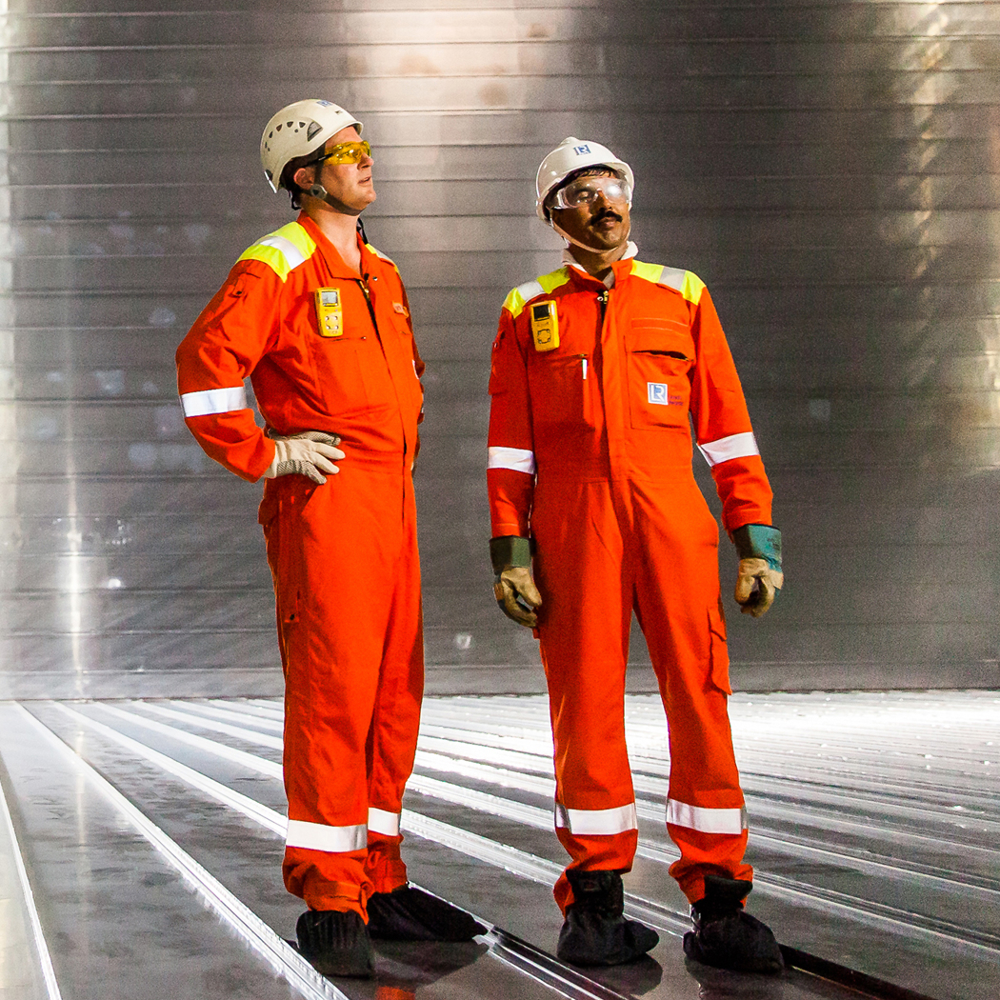Anna Apostolopoulou explains how floating technology can provide a faster, cheaper and more flexible pathway to project development that could help transform the lives of millions of people.
Authored by Anna Apostolopoulou, LR's Global Floating Offshore Installations Director
As I write this, world energy markets are in turmoil and the price of gas has transcended all previous peaks. However, in the medium-term future and looking beyond today’s geopolitical nightmare, natural gas offers huge benefits as a transition fuel on the global decarbonisation journey that can transform the lives of millions of energy-starved people.
Floating technology, specifically, can provide a faster, cheaper and more flexible pathway to project development. It offers more flexibility, a more straightforward regulatory approval process, and a faster route to final investment decisions (FIDs).
Smaller complements
We are also focusing closely on through-life operating costs. Digital technologies are enabling a new approach to human resource deployment. Significant reductions in complements are now possible, and digital twins, drones, cameras, and remote survey techniques can enhance safety, reliability, and availability. Floating assets cannot yet be unmanned, but their improved safety can be assured by smaller crews using the latest technologies.
A wide range of asset deployment arrangements can be tailored to fit specific requirements. These include a new or converted floating production storage unit (FSRU) plugged into a local or national grid; an FSRU to serve energy-remote local communities; a floating storage unit (FSU) feeding regasification barges or shore-based plant, and so on. This can sometimes offer a more flexible setup.
We are currently inundated with enquiries on projects like this and our recent track record in floating technology is a sound basis on which we can offer a wide range of consultancy services at every stage. These services range from option evaluation assessment, investment appraisal, site assessment, design review, risk analysis including HAZID and HAZOP studies, conversion design, planning and oversight, and through-life assurance. And all of these services are in addition our traditional classification functions including shipyard attendance and asset commissioning.
I am lucky enough to have worked for LR in the Mediterranean region and Israel where we have been successfully engaged in a number of floating gas developments, including the new FSRU for Cyprus which is nearing completion at Cosco Shipping Heavy Industry in Shanghai and is expected to be deployed on site next year. The FSRU is a conversion of the 137,000m3 Galea, built in 2002.
Our focus has also been on the first and now a likely second FSRU in Greece’s Alexandroupoulis, where LNG is supplied by ships, stored cryogenically onboard, and regasified to be connected to the national gas transmission system via a 28-kilometre pipeline. In a completely independent system, the gas will be supplied to the gas grid in Greece, but also to countries in the wider region including Bulgaria, North Macedonia, Romania and Serbia.
Weighing up the options
In any project, there are a wide range of choices, each with their advantages. So one of our first tasks is often to assist with or undertake an assessment of the development pathways. Some of the early decisions will include whether to build new or convert; whether to choose an FSRU or FSU with a regasification plant either on barges or in a shore-based facility; capacity of the plant; and choice of site.
Then there are the more detailed design considerations: mooring arrangement, risers, valves, pipelines, jetties, design of the regasification unit, treatment of boil-off gas, and so on. And all of this must be considered over a 20-year timeframe, for example, in a context where the unit will probably remain on station throughout.
There are many benefits to conversions, but they present different challenges. Whereas new FSRUs can be built to a specific design, converting an existing LNG carrier poses many challenges. These include the installation of an entirely new regasification system; redesign of the cargo tank system; new arrangements for boil-off gas; new piping, valves, safety systems and always, always, attention to temperatures and pressures.
Conversions are significantly faster and cheaper, however, and there is likely to be a ready supply of conversion candidates in the next few years. Some ballpark figures on relative costs: we estimate that a new FSRU is 40-50% cheaper than a land-based plant. It might cost $250-300 million and construction could typically take about 24-30 months. A conversion, on the other hand, might cost $80-100 million and take about 18 months.
For the moment, construction capacity for new FSRUs is limited. Owing to their complexity, only a small number of shipyards can build them. Many of these facilities are full until at least the middle of this decade.
However, there is more flexibility in the conversion market. Not only are there highly experienced FSRU/FSU conversion specialists amongst Singapore’s major shipyards, but some South Korean shipyards have also expressed interest in FSRU conversion projects recently.
There are, in my opinion, oceans of opportunity.






